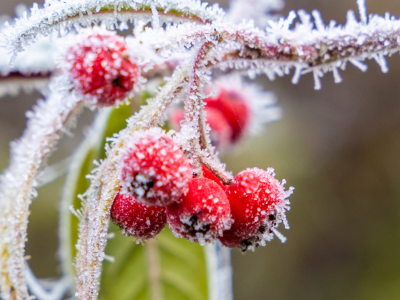Bee spotting in the Chilterns with Linda Seward.
Until I started photographing bees last spring, I had the average person’s interest in them. I enjoyed eating their honey and feared being stung. I regarded their calming buzz as a pleasant note in nature’s spring and summer song. But that was just about the extent of my attraction to them. Once I began to look carefully at bees, however, I discovered remarkable and previously hidden beauty.
Fascinating Bee Facts
- Bees display a wide range of colours on their tiny bodies – from white to cream and from rust to a rich orange-red, as well as all shades of yellow. They sport colourful branched hairs that differentiate them from wasps and hoverflies. This hairiness enables them to gather pollen to bring back to the nest. Look out for females with brushes or baskets on their hind legs loaded with it.
- The length of a bee’s tongue varies from one species to another, and determines the flowers on which they dine. Bees with long tongues can extract pollen and nectar from deep bell-shaped flowers like foxgloves. Bees with short tongues prefer open blooms like daisies. Short-tongued bees are clever, however, and when required will become thieves, biting through the base of a deep flower to steal the nectar – this means that the flower doesn’t get pollinated, but it does provide the bee with a quick and tasty snack!
- A bee’s buzz is caused by its wings beating about 230 times per second, creating vibrations that result in the familiar buzzing noise. It can also be caused by pulsations in the thoracic muscles when the bee isn’t in flight.
- If a bee lands on you, it’s usually a mistake and it will fly off when it realises you won’t provide nectar. They don’t want to sting you, so a calm approach is best. Gently brush or blow on the bee to encourage it to leave. I was astounded to discover that while most bumble bees won’t sting unless severely provoked, they don’t like being bothered and will warn off an intrusive photographer like me from getting too close by raising one of their legs in the air.
- As I studied bees, I noticed that they didn’t seem to visit a flower that another bee had just fed on. This is because bees’ feet scent-mark the flowers as they land, indicating that the flower has been plundered already – a real time-saver for their fellow insects.
- There are about 250 different species of Hymenoptera, family Apidae (that’s bees to you and me) in the UK. Honey bees and bumble bees are social insects, living together in hives or nests, while the rest of the bees in the UK are solitary.
Honey Bees
Honey bees are small and thin with a separation between their head and abdomen. They live in domesticated hives in tens of thousands, forming swarms when ready to establish new nests. There are reportedly no wild honey bee colonies in the UK; any nests found away from managed hives are considered feral escapees. Female worker bees look after the queen and her larvae, as well as gathering nectar and pollen for the hive; one worker bee produces about ½ teaspoon of honey in her lifetime. Honey bees perform an aerial dance to let their hive know where food can be found. They die after stinging.
Bumble Bees
Bumble bees are large, hairy and round or oval, with no division between their head and abdomen. They live in wild nests of a few hundred, often in a hole in the ground, collecting nectar for their own consumption and continuously foraging to keep their supply topped up for bad weather days. While bumble bees rarely sting unless aggravated, they can sting many times and don’t die after doing so. This is because their ‘stingers’ are smooth and not barbed like those of the honey bee, so they don’t snag on skin. Bumble bees are better pollinators than honey bees, because they feed on a variety of blossoms. Honey bees tend to visit the same species of flower, even at the expense of a nearby blossom that might have more nectar – this behaviour is called flower constancy and it was first noticed by Aristotle over 2,000 years ago.
Nectar thieves aren’t the only devious insects in the Chilterns. Cuckoo bees are parasites. A cuckoo queen will sneak into a nest, kill the rightful queen and lay her own eggs, leaving them to be raised by the host worker bees. When this happens, the host bees are doomed, because the cuckoo larvae will consume all the hive’s resources. Although cuckoo bees closely resemble their hosts, they have darker wings and don’t brandish pollen baskets on their hind legs (they don’t need to collect pollen).
Bees in Decline
While walking through wild flower meadows over the past few summers, I’ve noticed a marked decline in bees and other pollinators. Some flowery fields are eerily silent, which can’t be a good thing. This decrease, of great concern to scientists and food producers alike, is triggered by several factors. All bees are exceptionally sensitive to pesticides, including organic insecticides, so their use is particularly damaging. Loss of habitat plays a huge role as wild flower meadows are replaced by monocrop agriculture. Disease and parasites can cause the collapse of beehives. Recent studies have shown that bumble bees have contracted honey bee diseases through shared flowers. In addition, the rise in beekeeping means that wild bees are competing for limited resources in areas with many honey bee hives.
Bees Need Our Help
Planting pollinator-friendly plants in your garden is something that can be done on a small scale, but contributing to organisations such as the Bumblebee Conservation Trust: bumblebeeconservation.org or The British Bee Charity: britishbeecharity.com will do much to assist our essential pollinators.
If you find a bee that looks tired or stressed, it might just be resting or it might need an energy boost. Find a bee-friendly flower and gently deposit the bee in the middle – you can always locate a dandelion or patch of ragwort on which to pop your grounded bee, even on city streets. Alternatively, make up a mixture of 50/50 white sugar and water, and keep it handy; offer a few drops on a spoon to an exhausted bee and it will soon recover. Never bring a bee indoors.
You might see tiny mites on bumble bees; these don’t feed directly from the bee, but cling to the hair until the bee finds a nest. There, the mites will disembark to feed on the nest’s detritus – important for nest hygiene. So don’t try to remove them!
When I moved to the Chilterns, I planted a range of flowers that would bloom from March to October to beautify my garden. I didn’t realise at the time that I’d be providing pollen and nectar for early and late bees, as well as butterflies and hoverflies. I use no fertilisers or pesticides, so wildlife thrives. As a result, I didn’t have to go far to take the pictures shown here.
I stive to learn the name of everything I photograph, which entails research and study, plus help from experts. There are many books on bees and the internet is a great source of knowledge. If you take a good photo of a bee you can post it on the Facebook site: UK Bees, Wasps and Ants: facebook.com/groups/1590641777855221 where obliging experts will help identify it. I would like to thank the supportive members on this website for their help in identifying the bees photographed.
I post daily photos of nature on my Instagram @quiltmaniac1
Check out my website lindaseward.com





